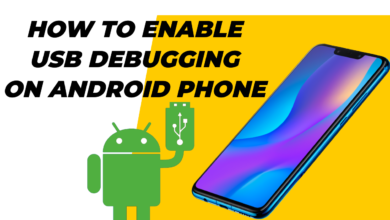
Direct deposit is the modern, hassle-free way to receive your paycheck, offering speed, security, and convenience. Instead of waiting for a paper check that needs to be deposited manually, direct deposit automatically transfers your earnings straight into your bank account on payday. This method not only saves time but also reduces the risk of lost, stolen, or delayed payments. Whether you’re starting a new job or switching from physical checks, setting up direct deposit is a simple process that ensures you get paid efficiently.
Many employers now require or strongly encourage direct deposit due to its reliability and cost-effectiveness. Beyond just receiving your salary, direct deposit often allows you to split payments between multiple accounts, access funds earlier, and eliminate trips to the bank. If you’re ready to streamline your payroll experience, this guide will walk you through every step from gathering the right banking details to confirming your first electronic deposit.
How to Set Up Direct Deposit with Your Employer
Instant Access and Enhanced Security
With direct deposit, your paycheck is electronically transferred to your bank account on payday, eliminating the need to physically deposit a paper check. This means immediate access to your funds—no waiting for checks to clear or making trips to the bank. Additionally, direct deposit significantly reduces the risk of lost, stolen, or delayed checks, ensuring your hard-earned money reaches you securely and on time every pay period.
Flexible Money Management and Early Payment Options
Direct deposit offers financial flexibility by allowing you to split your paycheck between multiple accounts. For instance, you can automatically send a portion to savings and the remainder to checking, making budgeting effortless. Some employers even provide early direct deposit, releasing funds 1-2 days before the official payday a valuable perk for covering bills on time or managing unexpected expenses without waiting. This feature, combined with automated deposits, simplifies financial planning and helps you stay in control of your money.
Steps to Set Up Direct Deposit with Your Employer
Gather the Required Information
Before you can set up direct deposit, you’ll need specific banking details. The most critical piece of information is your bank account number and routing number, which can be found on a check or through your online banking portal. If you don’t have checks, contact your bank to obtain these details. You may also need to provide your bank’s name, account type (checking or savings), and possibly a voided check for verification.
Complete the Direct Deposit Authorization Form
Most employers provide a direct deposit authorization form, either electronically or in paper format. This form will ask for your banking details and may include options for splitting your deposit between multiple accounts. Fill out the form carefully, ensuring all information is accurate to avoid delays or failed transfers. If you’re unsure about any section, consult your HR department for guidance.
Submit the Form to Your Employer
Once you’ve completed the form, submit it to your employer’s payroll or Human Resources department. Some companies allow digital submission through an employee portal, while others may require a physical copy. If you’re submitting a paper form, consider keeping a copy for your records. After submission, the payroll team will verify your details and process the request, which may take one or two pay cycles to take effect.
Verify the First Deposit
After your direct deposit is activated, monitor your bank account around payday to confirm the transaction. If the deposit doesn’t appear as expected, contact your employer’s payroll department to troubleshoot the issue. Occasionally, small test deposits are sent initially to verify the account check your balance for these amounts and confirm them if required.
Update Information if Necessary
If you change bank accounts or need to adjust your deposit allocations, notify your employer immediately. You’ll likely need to complete a new authorization form to update your details. Keeping your information current ensures uninterrupted salary deposits and prevents payment delays.
Common Issues and Troubleshooting
Troubleshooting Late or Missing Direct Deposits
If your direct deposit doesn’t arrive as expected, first confirm with your employer that payroll was processed on schedule. Next, verify that your bank account and routing numbers were entered correctly even a single digit error can delay or prevent the transfer. If everything appears correct but funds still haven’t posted, contact both your payroll department and bank to investigate potential processing delays or system errors. Keeping pay stubs and enrollment confirmations helps resolve these issues faster.
Preventing Rejected Deposits & Account Issues
Direct deposit failures often occur when bank accounts are closed, frozen, or overdrawn before payroll processing. Always ensure your designated account remains open, in good standing, and has no restrictions that might block deposits. If switching accounts, update your information with HR immediately using an old account after closure typically results in rejected deposits that require manual reissuing of payment. Proactive account management prevents these frustrating disruptions to your paycheck access.
Security Considerations for Direct Deposit
Secure Information Sharing Practices
When setting up direct deposit, always provide your banking details through your employer’s official, encrypted system whether through a secure company portal, in-person HR submission, or password-protected digital forms. Never email sensitive account numbers or routing information, as standard email lacks proper encryption. Treat your banking details with the same caution as your Social Security number, verifying that any platform requesting this information is legitimate and employer-approved before submission.
Proactive Monitoring & Fraud Prevention
While employers typically use secure payroll systems, you should regularly review bank statements for any suspicious activity, especially after first setting up or changing direct deposit information. Enable transaction alerts through your bank’s mobile app to receive instant notifications of deposits or withdrawals. If you notice unauthorized access or suspect compromised banking details, immediately contact your financial institution to freeze transactions and request a new account number if necessary. Many banks offer $0 fraud liability protection when reported promptly.
Read More: How to Create a Marketing Strategy That Actually Works
Conclusion
Direct deposit offers a secure, efficient, and hassle-free way to receive your paycheck, eliminating the need for paper checks and manual bank visits. By following the simple steps outlined in this guide providing your banking details, completing the authorization form, and verifying your first deposit you can ensure a smooth transition to this convenient payment method. Once set up, you’ll enjoy faster access to your earnings, reduced risk of lost or stolen checks, and greater control over your finances through optional account splitting.
Making the switch to direct deposit is a smart financial move that benefits both you and your employer. No more waiting in line at the bank or worrying about misplaced paychecks your money will be automatically deposited into your account on payday, ready for use. If you ever need to update your banking information or encounter any issues, your employer’s HR or payroll department can assist you. Embrace the convenience of direct deposit today and experience a simpler, more reliable way to get paid.
FAQs
How long does it take for direct deposit to start?
It typically takes one or two pay cycles after submission for direct deposit to become active.
Can I split my paycheck into multiple accounts?
Yes, many employers allow you to divide your deposit between checking, savings, or other accounts.
What if I don’t have a bank account?
Some employers offer payroll cards as an alternative, or you can open a bank account to use direct deposit.
Is direct deposit safe?
Yes, it’s more secure than paper checks since there’s no risk of physical loss or theft.
What should I do if my deposit is late?
First, confirm with your employer that payroll was processed, then check your bank details for errors before contacting support.







One Comment